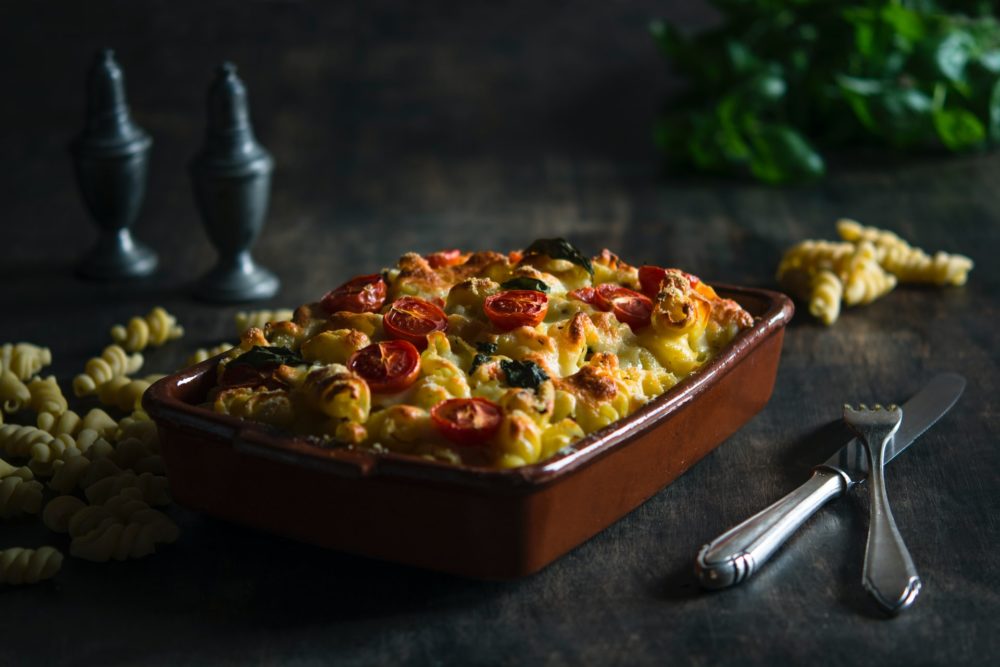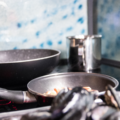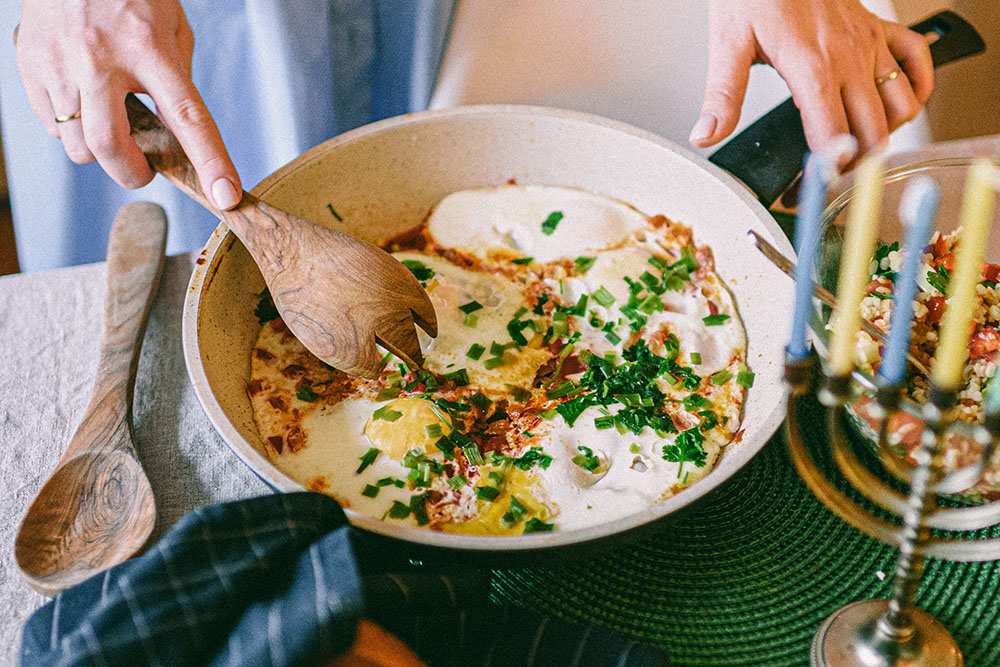Do you remember grandma’s old casserole with the trademark blue “cornflower” decoration on white plates? Well, if that memory evokes thoughts of family gatherings, tasty dishes, and a fun time, then you might be surprised to know that those same casseroles are selling for thousands on eBay today!
Though the blue on white pattern may be hard to find today, CorningWare is still around. And while the original cookware was all made in the USA, many of our readers wonder if that is still the case. So, let us take a trip down memory lane and then give you the answer to the question at hand: Where is CorningWare made?

A Brief History of Corning Inc.
Before we discuss CorningWare, let us talk a bit about the company that created this excellent product – Corning Glass Works, or today known as Corning Inc.
You will be surprised to know that Corning is a 150 year-old-company credited with creating the glass for Edison’s bulb! Corning was founded in Somerville, MA as Bay State Glass Co, but quickly moved to Corning, NY, in 1868, where their headquarters have remained for over 150 years now.
Corning’s most famous and oldest product was Pyrex, still available in the market today. Pyrex was created in July 1913 at the behest of a scientist’s wife, Bessie Littleton. Pyrex was a line of ceramic and glass cookware that looked nice, was easy to clean, could be used for many purposes in the kitchen, and withstood the test.
The Invention of CorningWare
Like most scientific innovations, the creation of CorningWare was a happy accident.
Donald Stookey of the Corning Research and Development Division created CorningWare. One day, he was working with a piece of photosensitive glass, which he kept in a furnace, intending to heat it to 600°F. Upon checking the glass after some time, he discovered that he had accidentally heated the furnace to 900°F and the glass turned into a milky white color.
He was trying to discard the glass, then again, by accident, he dropped. To his huge surprise, the glass did not break! Instead, it just bounced off the surface of the floor.
This was the interesting incident that led to the creation of Pyroceram – a glass-ceramic mix that could withstand an oven’s high temperatures (up to 840°F). In 1958, Corning Inc. started producing Pyroceram cookware under the brand name “CorningWare.”
The most well-known product in this line was the casserole, which we talked about at the beginning of this article.
The Dominance of CorningWare
Over the next three decades, CorningWare dominated the market as one of the most sought-after cooking wares in the country. The blue cornflower logo on the product became a hallmark of quality, durability, and reliability.
So what was so great about CorningWare? Well, we already discussed its ability to withstand heat, but there are other reasons as well why it became so popular:
- You can take CorningWare from the freezer to the stovetop or the microwave. You can even put it on a broiler. It will never break, bend, or show so much as a crack.
- Pyroceram does not react to acidic foods.
- Pyroceram does not leach metal or other substances in your food.
- The material is easy to clean.
- The material is non-porous; it does not absorb liquids.
- If you are looking to cook with white wine or tomato sauce, Pyrocerm will keep the food without changing its taste, unlike metal cookware.
- It is completely non-toxic and safe for use.
CorningWare vs. Pyrex
Pyrex was the original product, and CorningWare came after. So shall we assume that CorningWare is better?
Not really. Of course, a choice for a particular type of cookware is often quite personal, but there is little to choose between the ceramic and glass cookware of CorningWare and Pyrex.
In some cases, people have found that CorningWare is better when serving goods in the dish they were made in.
Some people find Pyrex better for baking and CorningWare better for storage. Others say the opposite. Although there is a clear consensus that Pyrex is better for storing frozen foods, there is not much difference.
If I were to point out the only real difference – it would be aesthetics. The blue cornflower logo and the bright white color of CorningWare make for a great way to serve food to your guests.
Pyrex is certainly rough and tough, but it is not presentable.
The Decline of CorningWare
Despite the immense popularity of CorningWare, by the 1990s, its sales had started slumping. Newer and designer cookware had started to take shelf space at big stores. The baby boomer generation, which was accustomed to doing things the elegant way, gave way to Generation X and Y, who gave more importance to functionality.
In 1998, Corning had to sell off both its top product lines: CorningWare and Pyrex, to a company called World Kitchen, LLC (now known as Corelle), and in 2000 the production of CorningWare products was stopped. Factories and supply lines making Pyroceram based CorningWare in Charleroi and Clinton had to be shut down.
The Re-emergence of CorningWare
New direction brought new vigor to the line. In 2001 a stoneware-based line was introduced under the brand name of CorningWare. In 2008, stovetops were re-introduced as well.
CorningWare Today: Where is it Made?
After that short and sweet trip down history lane, let us come back to the raison d’etre of the article: Where is CorningWare made today?
The answer is not very simple. Most of Corelle’s products continue to be made in the US, including the Pyrex glassware that was a companion to CorningWare for so many decades.
But the original Pyroceram material for which CorningWare was famous is now produced in Bagneaux-Sur-Loing, France.
The cookware for the stovetop line is produced by Keraglass/Eurokera, who has a factory there. Production of the original Pyroceram based CorningWare cookware is very limited nowadays.
Is My CorningWare Casserole Rare?
Given that the original Pyroceram based cookware has nearly stopped, the CorningWare cookware from the 70s and 80s has become a bit of a novelty collector’s item.
While the soft blue cornflower design is still available quite easily in secondary retail, there are less common types of designs of CorningWare, including the Wildflower (1977-84) and the Floral Bouquet (1971-1975), that are sold for quite a lot these days.
Final Words
CorningWare cookware is legendary, and legends never die. In 2017, Corell started producing the original blue and white pattern of CorningWare cookware again as part of its 60th birthday celebrations.
If you have been passed down a piece of the original CorningWare cookware, you know what it is worth. To many of us from that generation, CorningWare still stands for family gatherings, nice holidays, and childhood.






